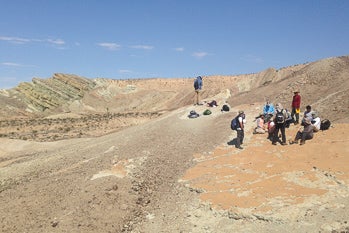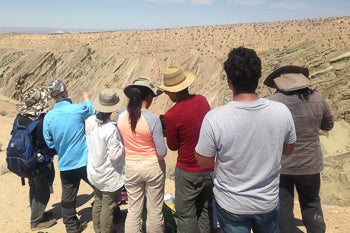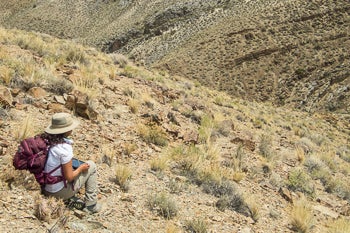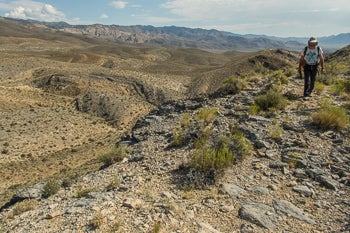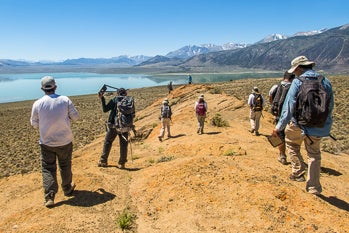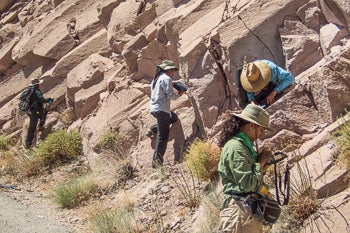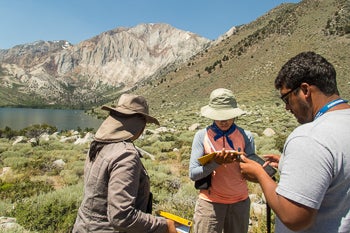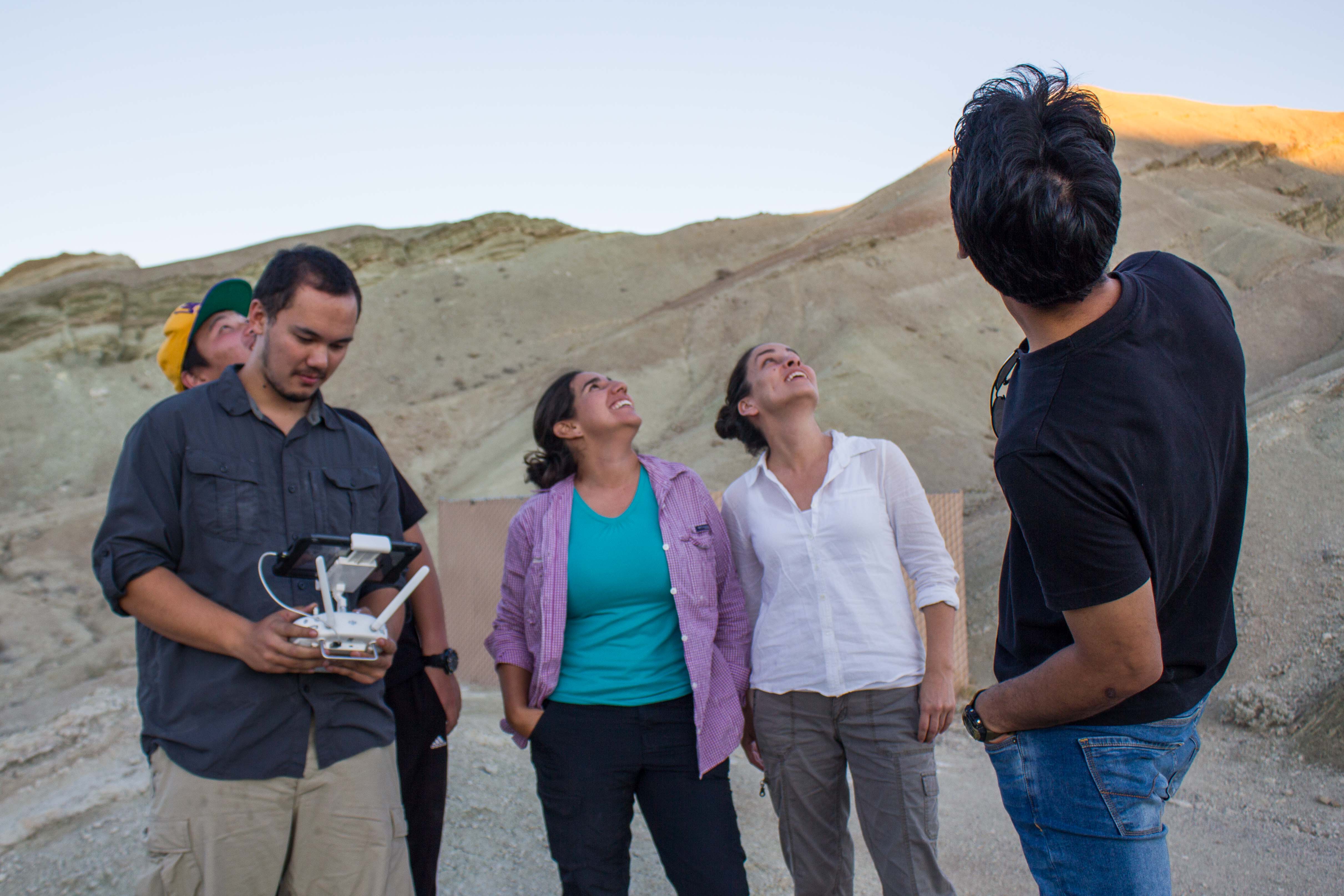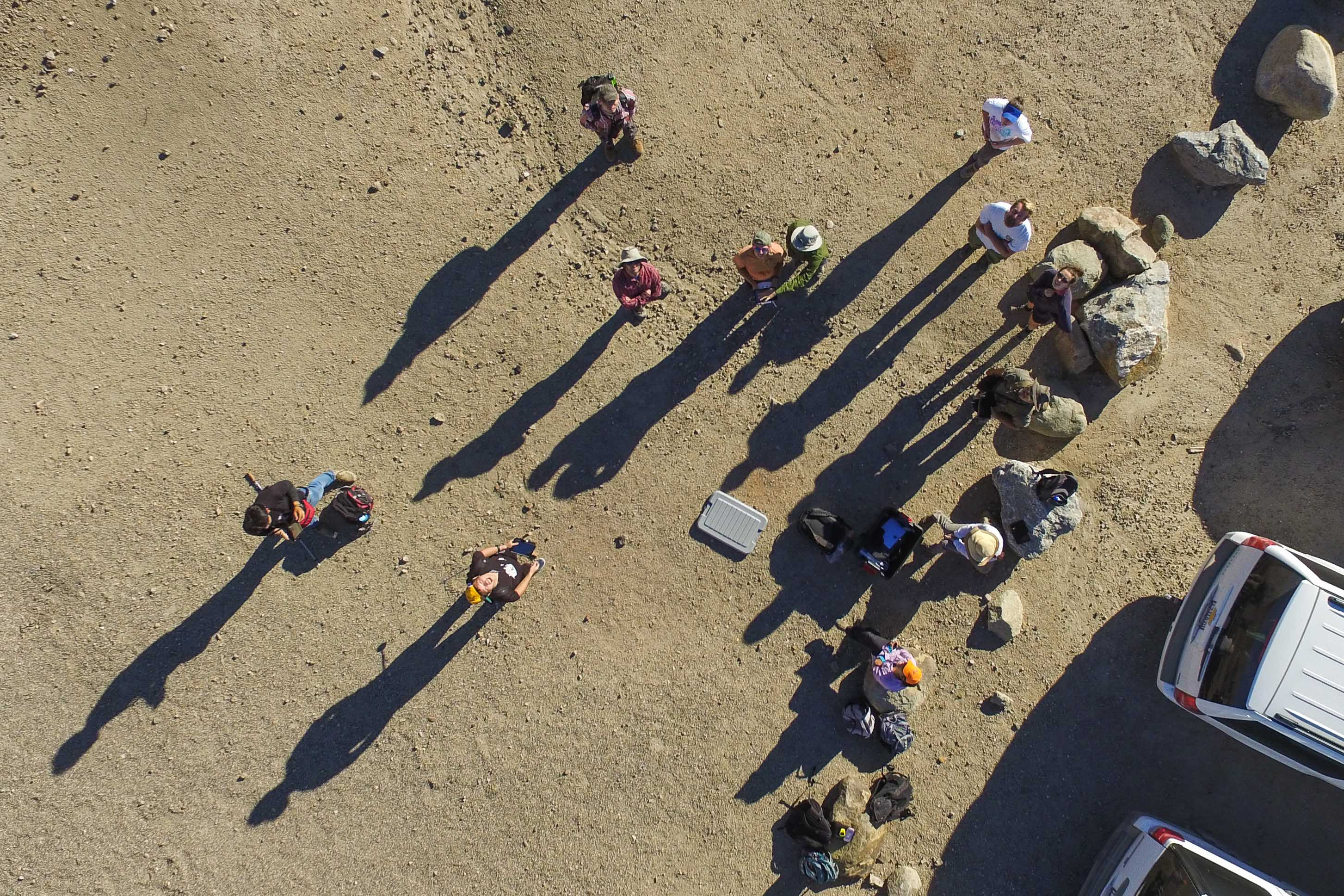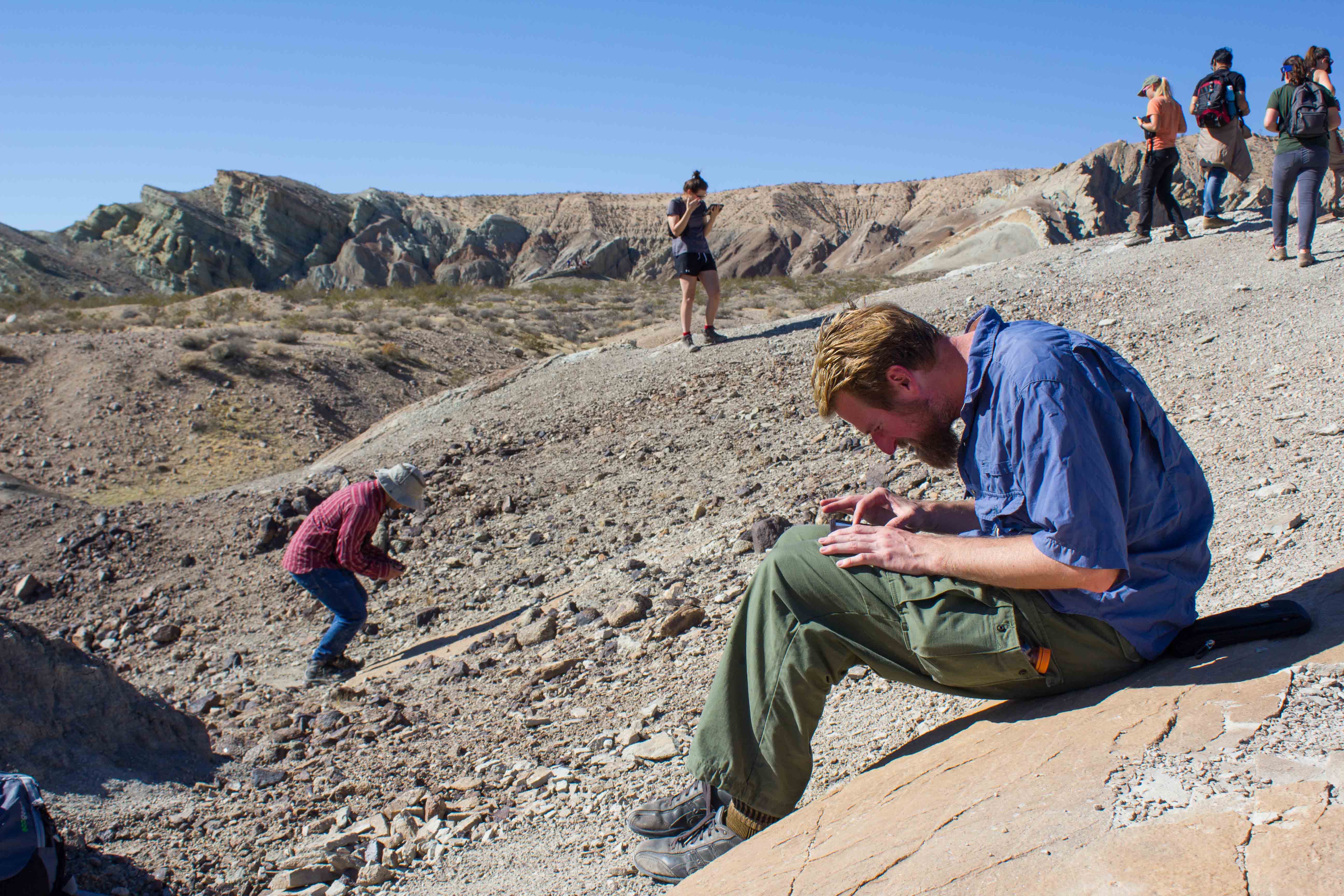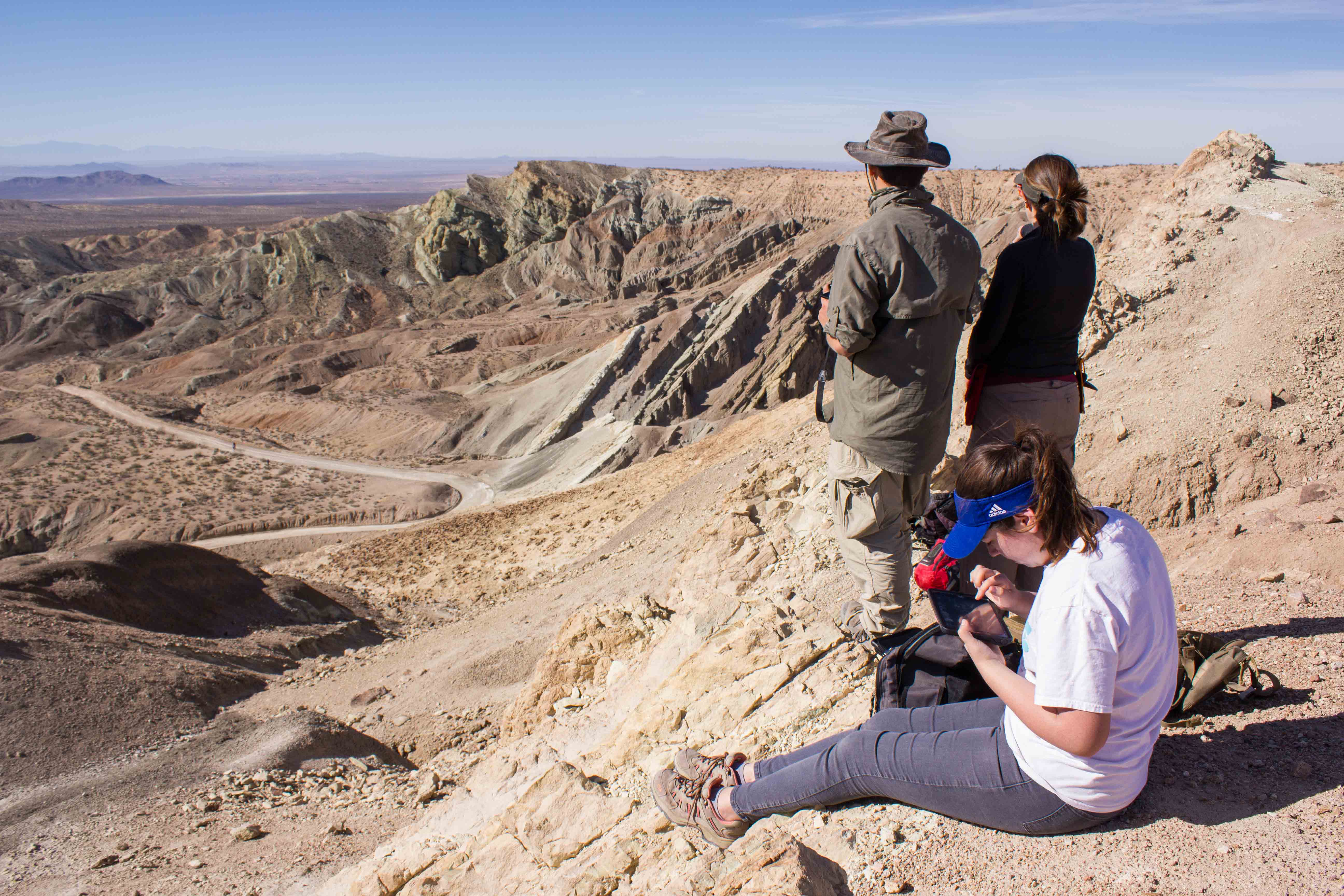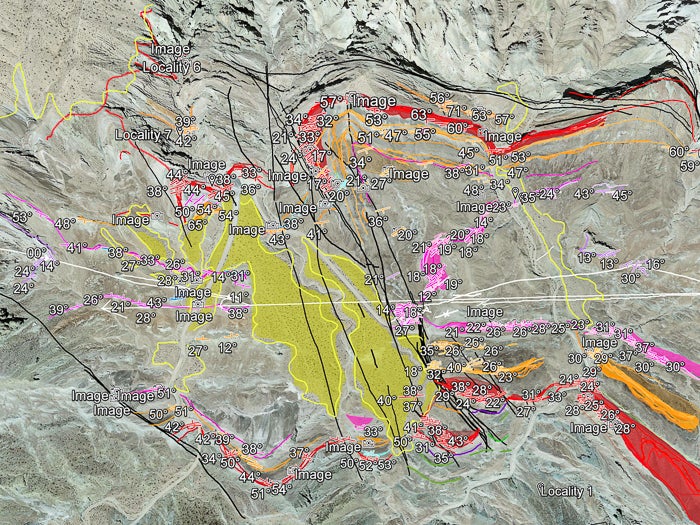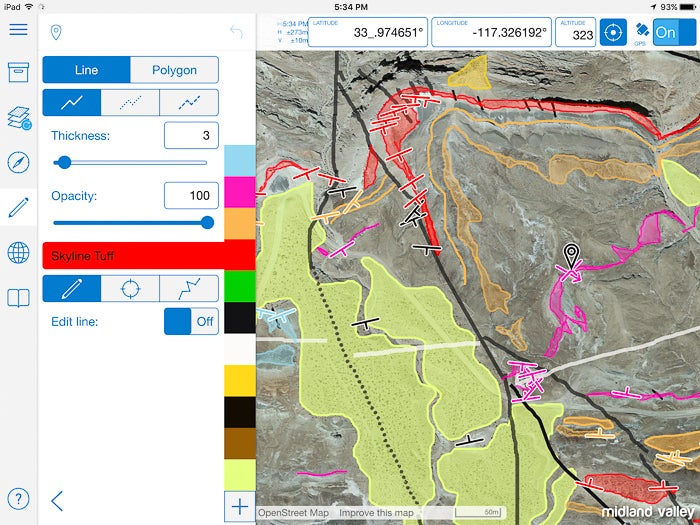Implementation
This GeoPad system was first implemented in UCR's 2016 four-week GEO 102A-B Summer Field Geology course, which was the final course many of the eleven undergraduate students took before graduating. The course is designed to be a capstone culmination of their degree, with prerequisite courses including Petrology, Sedimentology, Structural Geology, and two field mapping courses (which themselves have prerequisites). While traditional field mapping methods played a strong role in the Summer Field Geology course, we involved use of the tablets in about half of the field projects. The field projects were variable in scope and goals, and lasted one to eight days each.
Assessment
To assess the student projects I used a rubric I created with the above workflow in mind (adapted for all editing to be done on the GeoPad and quick export to a .kmz file). Note that many things relevant to paper or digitally drafted maps are not relevant to digital projects submitted in .kmz format (North arrow, declination, scale, title, etc.). "Neatness" and "accuracy" need to be considered based on a desired map scale. The ability to readily layer multiple student maps in Google Earth provides a very fair means of directly assessing the relative quality of student maps. Potential biases driven by handwriting style or coloring quality are also eliminated.
The digital field mapping project rubric is available for download here
This rubric is modified after one used by Miami University for their capstone field course and publicly available on SERC's website:
serc.carleton.edu/NAGTWorkshops/departments/degree_programs/instruments/miami_capstone_rubric.html
Cheating
Instinct might tell you that a subset of students will latch on to the opportunity to download data and claim it as their own. This concern may be genuine if you are mapping in an area used by other schools. However, if you chose to map in an area effectively only used by your class, you can easily maintain a KMZ database of all past years' student projects. Because you can readily layer as many maps as you want in Google Earth (and check for repeated or copied elements), you can check for cheating more quantitatively and with less effort compared to paper maps. This took only a few minutes for me to check an entire class for potential cheating.

